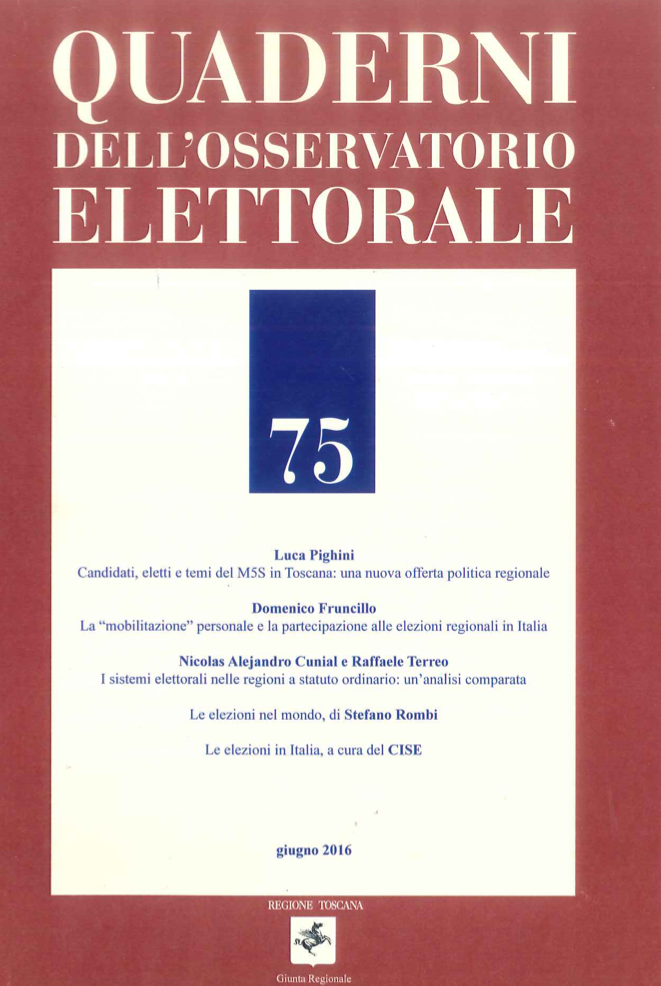Published 2016-06-30
How to Cite
Abstract
The goal of this paper is to answer the following question: what are the regional electoral systems in Italy now? After sixteen years of «electoral federalism», the electoral systems used to elect the President and the Regional Council have suffered more than a simple change over the years. Seven indicators are used to compare and contrast each of the systems: the broad family of systems it belongs to (majoritarian; proportional; mixed); the electoral constituencies; the structure of the electoral formula(s); the «second best candidate» clause; the majority prize; the electoral thresholds; the modes of vote's expression. Even though the goals that electoral reforms have set twenty years ago are still valid today – a higher bipolarity degree in the competition; high stability of the regional government; lower party fragmentation – a real progress has not been made towards these matters. The overview that emerges is clear: regions are adopting electoral systems that are more similar with respect to some indicators, and completely different with respect to others. Therefore, the aim of this paper is to clarify how current electoral rules work in the Italian regions, and to highlight the trends of electoral reforms.

